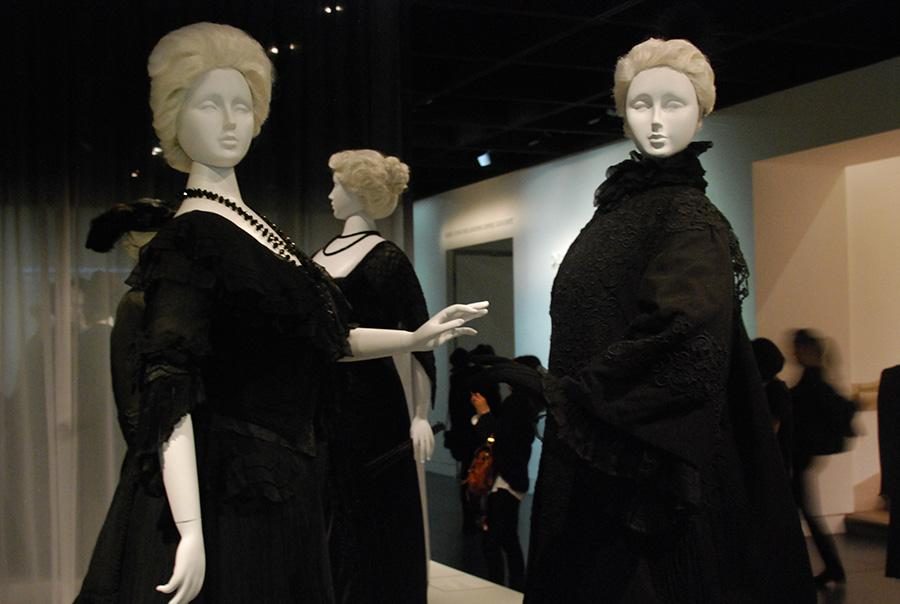Exhibition explores funeral fashion
More stories from Gianna Collier-Pitts
The presence of death has never been so attractive than when showcased in the Anna Wintour Costume Center. The upcoming Metropolitan Museum of Art exhibition, smartly coined “Death Becomes Her,” looks at the history of mourning attire in the 19th century across Europe and the United States. It also delves deeper into the societal trends surrounding grief and the female image.
The dark melody of Gabriel Fauré’s “Requiem, Op. 48” provides a musical backdrop as the exhibit takes the viewer through each decade of dress and highlights the specific evolution over time in style, color and fabric. With regard to the styles themselves, many were influenced by the fashions of the upper class because choices of dress were viewed as indicators of wealth and social status.
Long dresses dyed deep shades of black are complemented with thick silk taffeta, crepe and gauze fabrics during the initial stages of mourning, and they slowly taper to lighter fabrics and simpler embroidery with the passage of time. Standout pieces included royal mourning gowns from Queen Victoria and Queen Alexandra — the latter also owned two beaded silk evening gowns in mauve, another typical mourning color.
The collection pays respect to the fashion world becoming the indicator of mourning trends as the the popularity of fashion magazines increased during the mid-1800s. It additionally showcases the production of ready-made dresses created for purchase at local department stores and warehouses that sold dresses specifically for times of grieving. The materials became easier to manufacture over time, and the exhibit showcases more middle class families partaking in the sartorial trends because of the broadened availability.
Men and children’s mourning fashions are also lightly featured in the collection. During the time period in which the garments were actively worn, however, men and children played a smaller part in the external mourning process. Assistant curator Jessica Regan explained the role of gender in the event of mourning and the attire that went along with it.
“There was very little change between [men and children’s] ordinary attire and mourning … They really weren’t subject to the same expectations in terms of how elaborate the mourning should be,” Regan said. “In this period, [women] were considered, in some ways, representatives of their family’s level of propriety and respectability … Their mourning was a reflection of the family’s collective feelings of grief.”
Specific attention is paid to the dresses of widows throughout the century, as well as the hats, veils, gloves and parasols that distinguished them from the rest of the family. A second component of the exhibition displays jewelry and small accessories commonly worn during the mourning period, as well as paintings and a long-form comic from Life magazine. In the main exhibition room, quotes from notable society women appear to be fading on the walls as a century of sorrow is preserved in this captivating exhibition of costume.
“Death Becomes Her: A Century of Mourning Attire” runs through Feb. 1, 2015.
A version of this article appeared in the Oct. 22, 2014 print edition. Email Gianna Collier-Pitts at [email protected].























































































































































